
How to Use 2S LiPO Battery 2200mAh (35C): Examples, Pinouts, and Specs
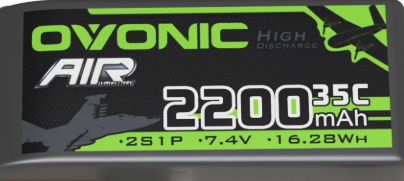
 Design with 2S LiPO Battery 2200mAh (35C) in Cirkit Designer
Design with 2S LiPO Battery 2200mAh (35C) in Cirkit DesignerOVONIC Air 2S LiPo Battery 2200mAh (35C) Documentation
1. Introduction
The OVONIC Air 2S LiPo Battery 2200mAh (35C) is a high-performance, rechargeable lithium polymer (LiPo) battery designed for demanding applications. With a nominal voltage of 7.4V (2 cells in series) and a discharge rate of 35C, this battery is ideal for powering remote-controlled (RC) vehicles, drones, and other high-current devices. Its lightweight and compact design make it a popular choice for hobbyists and professionals alike.
Common Applications
- RC cars, boats, and airplanes
- Drones and quadcopters
- Robotics and DIY electronics projects
- Portable power systems
- High-performance hobbyist applications
2. Technical Specifications
The following table outlines the key technical details of the OVONIC Air 2S LiPo Battery:
| Parameter | Specification |
|---|---|
| Manufacturer | OVONIC |
| Part ID | OVONIC Air |
| Battery Type | Lithium Polymer (LiPo) |
| Nominal Voltage | 7.4V (2 cells in series) |
| Capacity | 2200mAh |
| Discharge Rate | 35C (77A continuous discharge) |
| Charge Rate | 1C recommended (2.2A) |
| Max Charge Voltage | 8.4V |
| Connector Type | XT60 (discharge) |
| Balance Connector | JST-XH (2S balance plug) |
| Dimensions | 106mm x 34mm x 18mm |
| Weight | ~120g |
| Operating Temperature | -20°C to 60°C |
| Storage Temperature | -10°C to 45°C |
Pin Configuration
The OVONIC Air 2S LiPo Battery has two connectors:
- XT60 Connector: Used for power delivery to the load.
- JST-XH Balance Connector: Used for balancing the two cells during charging.
| Pin | JST-XH Balance Connector Description |
|---|---|
| Pin 1 | Cell 1 Negative (-) |
| Pin 2 | Cell 1 Positive (+) / Cell 2 Negative (-) |
| Pin 3 | Cell 2 Positive (+) |
3. Usage Instructions
Connecting the Battery
- Power Connection: Connect the XT60 connector to the input of your device or electronic speed controller (ESC).
- Charging: Use a LiPo-compatible balance charger with a JST-XH connector to charge the battery. Ensure the charger is set to 2S (7.4V) mode and a charge current of 2.2A (1C).
Important Considerations
- Charging Safety: Always charge the battery on a fireproof surface and never leave it unattended during charging.
- Voltage Monitoring: Avoid discharging the battery below 3.0V per cell (6.0V total) to prevent damage.
- Storage: Store the battery at 3.8V per cell (7.6V total) for long-term storage.
- Temperature: Do not expose the battery to extreme temperatures or direct sunlight.
Best Practices
- Use a LiPo voltage alarm or monitor to prevent over-discharge.
- Inspect the battery for physical damage or swelling before each use.
- Use only compatible chargers and connectors to avoid short circuits.
4. Example Application with Arduino UNO
The OVONIC Air 2S LiPo Battery can be used to power an Arduino UNO via a voltage regulator or a DC-DC step-down converter to ensure the voltage is within the Arduino's operating range (5V or 7-12V). Below is an example of how to use the battery with an Arduino UNO to power an LED.
Circuit Diagram
- Connect the XT60 connector to a DC-DC step-down converter (e.g., LM2596) to regulate the voltage to 9V.
- Connect the output of the step-down converter to the Arduino UNO's VIN and GND pins.
- Connect an LED to pin 13 of the Arduino with a 220-ohm resistor in series.
Arduino Code
// Simple LED Blink Example
// This code blinks an LED connected to pin 13 of the Arduino UNO.
void setup() {
pinMode(13, OUTPUT); // Set pin 13 as an output
}
void loop() {
digitalWrite(13, HIGH); // Turn the LED on
delay(1000); // Wait for 1 second
digitalWrite(13, LOW); // Turn the LED off
delay(1000); // Wait for 1 second
}
5. Troubleshooting and FAQs
Common Issues
Battery Not Charging
- Cause: Incorrect charger settings or damaged balance connector.
- Solution: Verify the charger is set to 2S mode and check the balance connector for damage.
Battery Swelling
- Cause: Overcharging, over-discharging, or physical damage.
- Solution: Discontinue use immediately and dispose of the battery safely.
Device Not Powering On
- Cause: Low battery voltage or loose connections.
- Solution: Check the battery voltage with a multimeter and ensure all connections are secure.
Short Runtime
- Cause: High current draw or degraded battery capacity.
- Solution: Ensure the load does not exceed the battery's discharge rating and replace the battery if necessary.
FAQs
Q1: Can I use this battery for a 3S device?
A1: No, this is a 2S (7.4V) battery and is not compatible with devices requiring 3S (11.1V) batteries.
Q2: How do I safely dispose of a damaged LiPo battery?
A2: Discharge the battery completely, submerge it in saltwater for 24 hours, and take it to a local recycling center.
Q3: What is the maximum current this battery can deliver?
A3: The maximum continuous current is 77A (35C x 2.2Ah).
Q4: Can I charge this battery with a USB charger?
A4: No, you must use a LiPo-compatible balance charger with a JST-XH connector.
6. Safety Warnings
- Do not puncture, crush, or short-circuit the battery.
- Keep the battery away from flammable materials during use and charging.
- Do not immerse the battery in water or expose it to moisture.
- Always follow the manufacturer's guidelines for charging and usage.
This documentation provides a comprehensive guide to using the OVONIC Air 2S LiPo Battery 2200mAh (35C) safely and effectively. For further assistance, refer to the manufacturer's website or contact their support team.
Explore Projects Built with 2S LiPO Battery 2200mAh (35C)
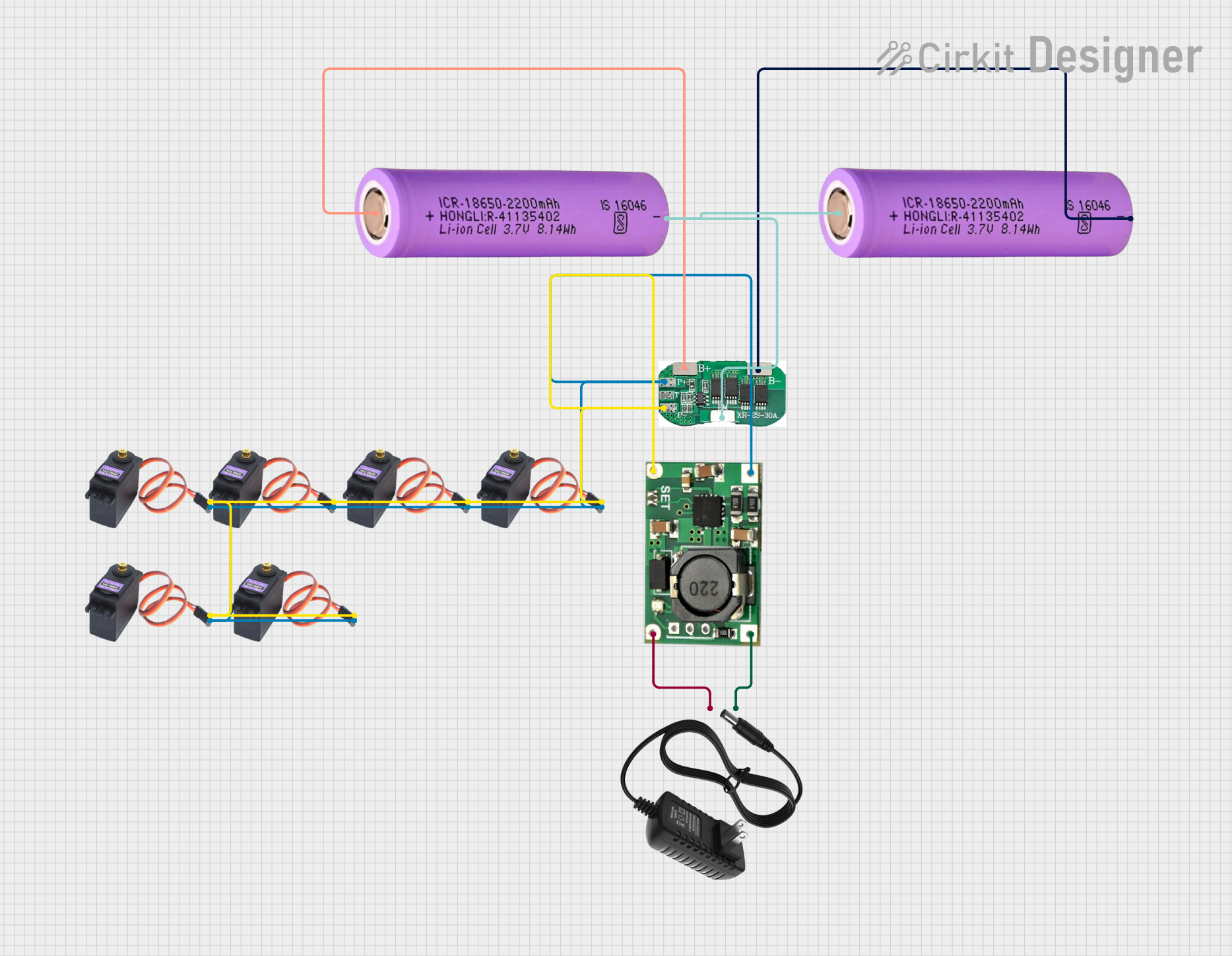
 Open Project in Cirkit Designer
Open Project in Cirkit Designer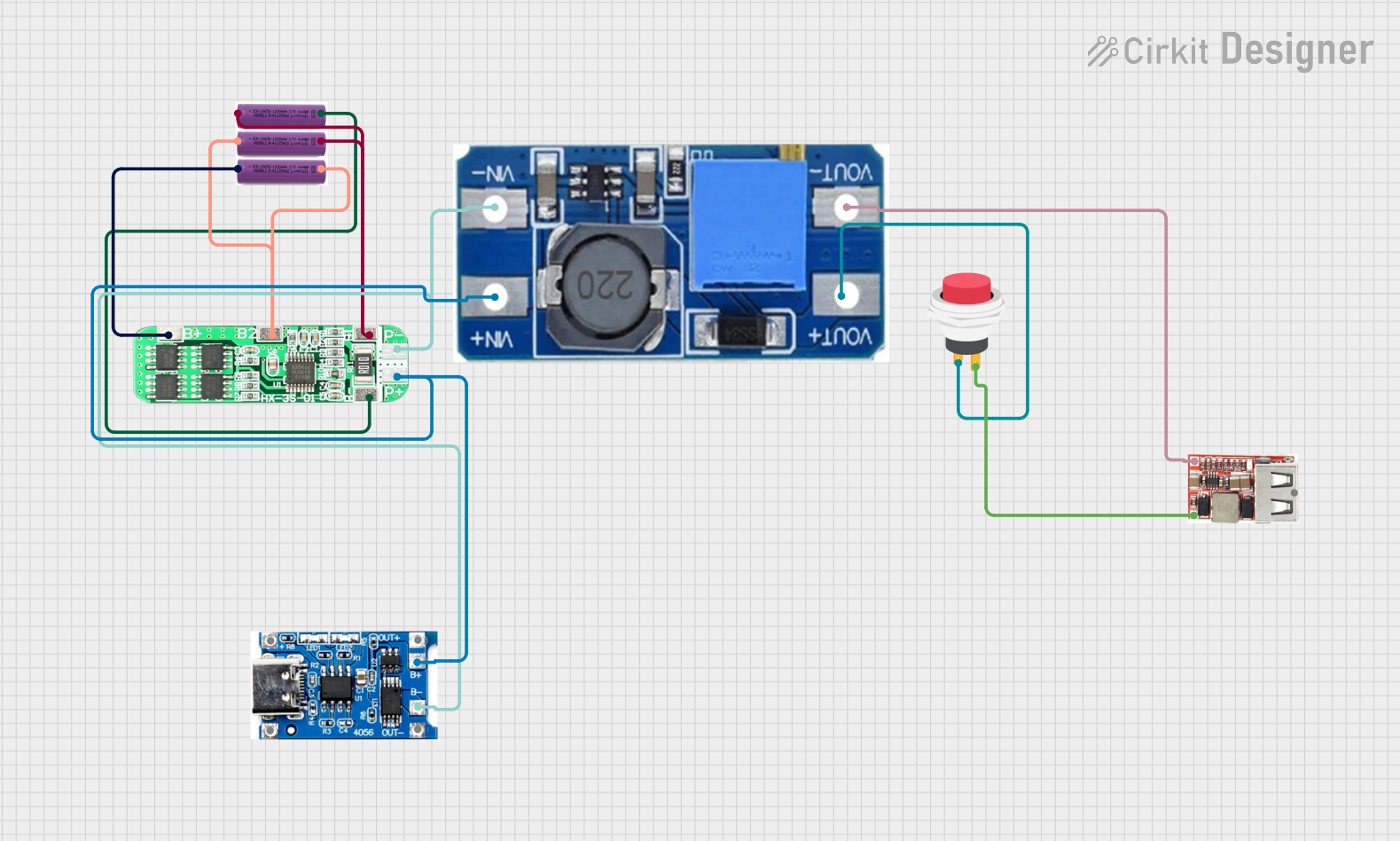
 Open Project in Cirkit Designer
Open Project in Cirkit Designer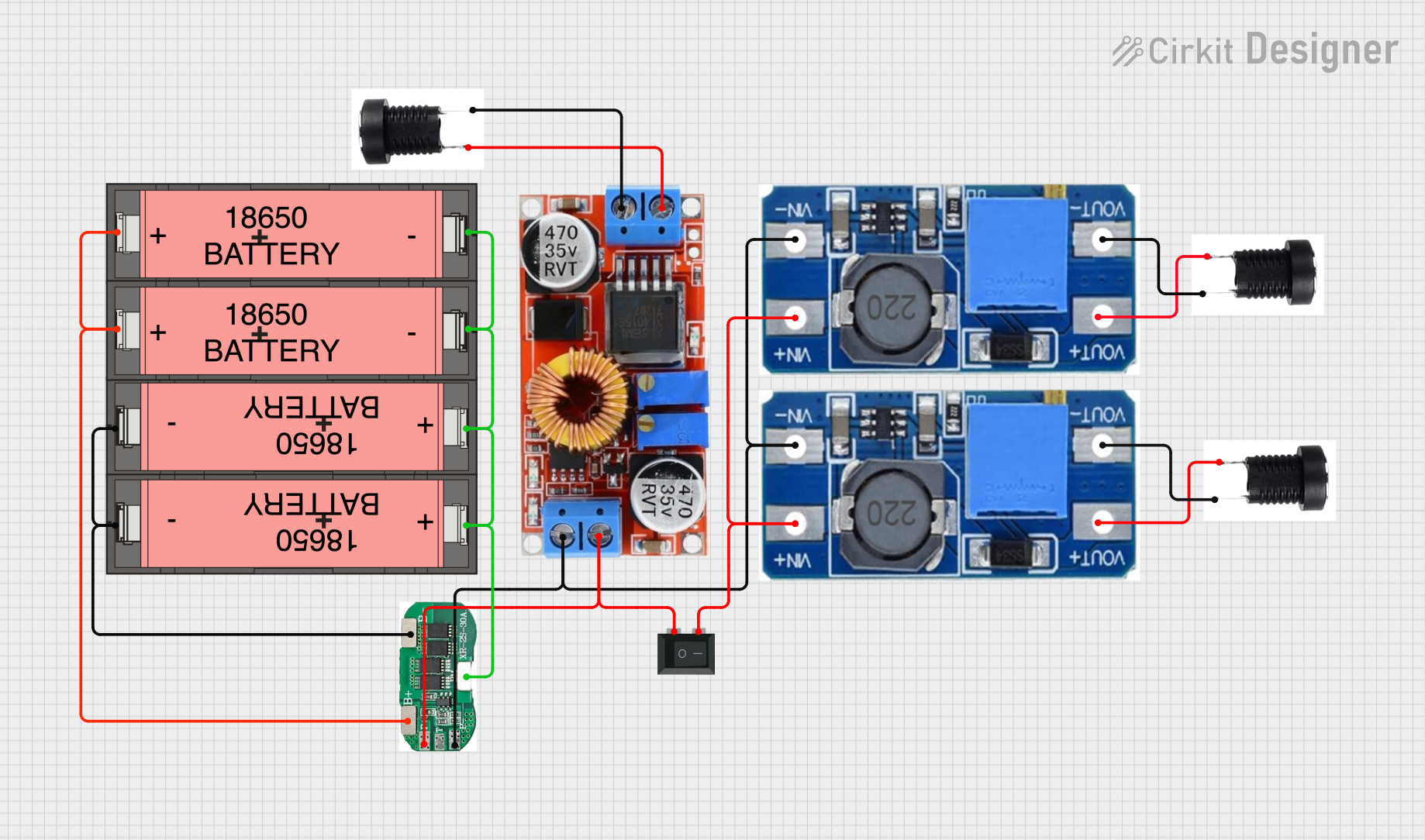
 Open Project in Cirkit Designer
Open Project in Cirkit Designer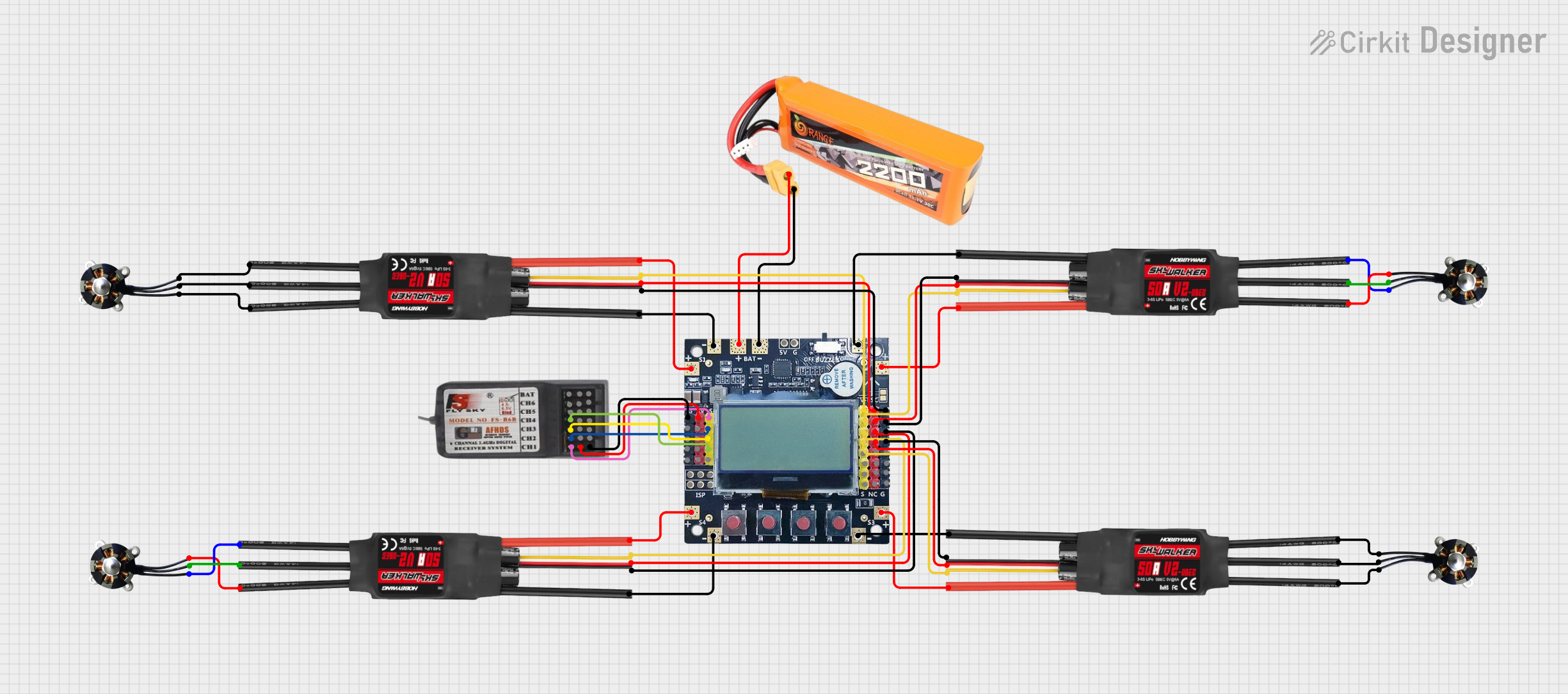
 Open Project in Cirkit Designer
Open Project in Cirkit DesignerExplore Projects Built with 2S LiPO Battery 2200mAh (35C)

 Open Project in Cirkit Designer
Open Project in Cirkit Designer
 Open Project in Cirkit Designer
Open Project in Cirkit Designer
 Open Project in Cirkit Designer
Open Project in Cirkit Designer
 Open Project in Cirkit Designer
Open Project in Cirkit Designer